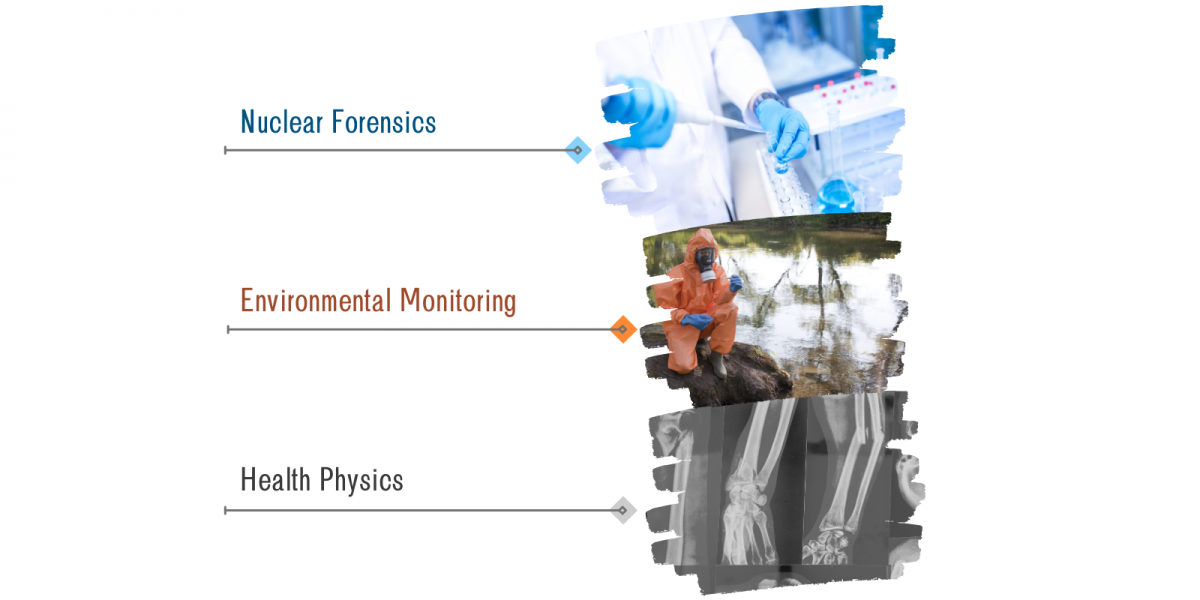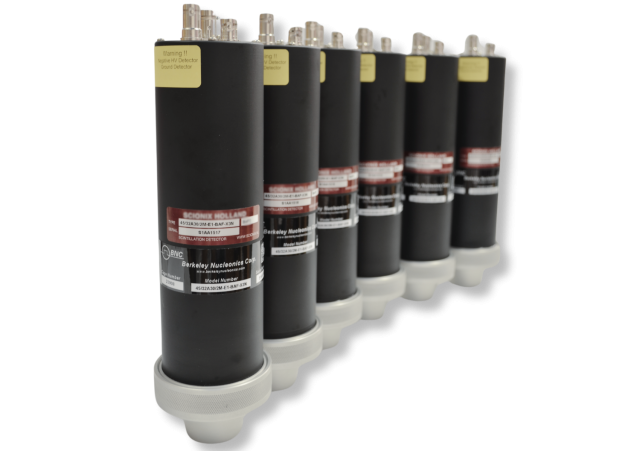February 20, 2024 - Unveiling the Strengths of LaBr3 for Gamma-Ray Spectroscopy in Harsh Environments
In the world of nuclear physics and radiation detection, the quest for materials that can perform under extreme conditions is relentless. Gamma-ray spectroscopy, a technique pivotal for identifying radioactive isotopes and analyzing nuclear reactions, demands detectors that are not only highly efficient but also resilient. Lanthanum Bromide (LaBr₃) has emerged as a material of choice, particularly for applications requiring precise measurements in harsh environments. This post explores the technical aspects of why LaBr₃ is exceptionally suited for these tasks.
High Resolution: The Keystone of LaBr₃
At the heart of LaBr₃'s superiority is its outstanding energy resolution. Energy resolution is a critical parameter in gamma-ray spectroscopy, as it determines the detector's ability to distinguish between gamma rays of closely spaced energies. LaBr₃ scintillators exhibit energy resolutions significantly better than those of traditional materials, such as Sodium Iodide (NaI) or even Cesium Iodide (CsI). This heightened resolution is primarily attributed to LaBr₃'s high light output, which is about three times higher than that of NaI(Tl). As a result, LaBr₃ detectors can identify and analyze gamma-ray spectra with remarkable precision, a vital attribute for applications in nuclear forensics, environmental monitoring, and health physics.

Characteristics of Lanthanum Bromide Scintillators
- Photoelectron Yield (Relative to NaI(Tl) for γ-rays): 165%
- Energy Resolution at 662 keV: 2.6%
- Temp.(°C): −30 to 60 °C
- Emission Peak Wavelength: 380 nm
- Refractive Index at Peak Emission: Approximately 1.9
- Initial Decay Time: 0.016 μs
- Photon Yield per keV of Gamma Radiation: 63 photons/keVγ
- Material Density: 5.08 g/cm³
- Hygroscopic Nature: Yes
Speed of Response: Capturing Fast Events
The temporal resolution, or the speed at which a detector can process radiation events, is another domain where LaBr₃ excels. The material's decay time is on the order of 16 nanoseconds, considerably faster than many other scintillators. This rapid response enables LaBr₃-based detectors to accurately record events in high-flux environments, such as those found near reactors or in space. For missions requiring real-time radiation monitoring or high-rate counting, LaBr₃'s swift reaction time ensures no significant data is lost to overlap or dead time.
Robustness in Harsh Conditions
Harsh environments pose a spectrum of challenges for radiation detectors, from extreme temperatures to high levels of background radiation. LaBr₃'s chemical and physical properties afford it a robustness that is essential for such conditions. Unlike some other scintillators, LaBr₃ is relatively insensitive to temperature fluctuations, maintaining its performance over a wide temperature range. This stability is crucial for applications in space exploration, where temperatures can vary dramatically, or in industrial settings with high thermal variability.
Moreover, LaBr₃ detectors are designed to withstand high levels of radiation without significant degradation in performance. This radiation hardness is particularly important in environments with high radiation backgrounds, ensuring that the detector's sensitivity and resolution are not compromised over time.
Versatility and Ease of Integration
The adaptability of LaBr₃ to different detection configurations adds to its appeal. Its scintillators can be produced in various shapes and sizes, catering to a wide range of spectroscopic applications. Whether for portable radiation detectors, airborne surveys, or fixed monitoring stations, LaBr₃ can be integrated seamlessly. Additionally, its compatibility with modern electronics and data processing systems allows for the development of sophisticated, user-friendly devices that can provide immediate, accurate readings even in the most demanding situations.

LaBr3 Detector System
Lanthanum Bromide distinguishes itself in gamma-ray spectroscopy through its exceptional blend of precision, rapid response, durability, and adaptability. Where alternative materials might struggle, LaBr₃ excels, delivering dependable and precise outcomes. Its applicability across a diverse range of fields, from tracking environmental pollutants to pioneering space missions, positions it as a pivotal technology in the continuous endeavor to decode and utilize radiation's potential. With ongoing advancements in research and technological development, LaBr₃'s contribution to advancing gamma-ray spectroscopy's capabilities is poised to grow, underscoring its significance in mastering the intricacies of the nuclear domain. For further details, visit our product page: https://www.
